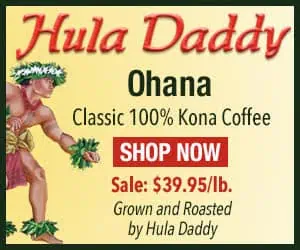Leaders of El Salvador’s growing specialty coffee sector are quick to point out what they feel are the particular strengths of their origin. First, large plantings of coffee varieties particularly respected for their flavor and character, and second, generally impeccable preparation of those varieties. This month’s cupping of nearly thirty El Salvador coffees from twenty-two American specialty roasters seems to support this confidence. The best of these coffees display both a quiet distinctiveness (presumably reflecting distinguished botanical variety) and clarity of profile (reflecting careful fruit removal and drying). We received only three samples of Honduras coffees, where the industry is still finding its way into the specialty mix. Consequently, most of this introduction is devoted to issues around the twelve El Salvadors reviewed this month.
Of Bourbons and Pacamaras
Three varieties of Coffea Arabica dominate El Salvador specialty production: the great heirloom variety Bourbon, first discovered growing in on the island of Reunion (then called Bourbon); Pacas, a small-growing or “dwarf” selection of Bourbon; and the most recent development, Pacamara, a cross between Pacas and Maragogipe. Since its discovery in the early twentieth century in Brazil, Maragogipe has remained a bit of a coffee novelty: admired for its gigantic, showy beans, but avoided by farmers for its stingy yield and by buyers for its typically thin and woody-tasting cup. However, crossing Maragogipe with Pacas has netted the surprising Pacamara, a variety now widely planted in El Salvador for its large beans (though smaller than those of the Maragogipe), decent yields, and above all for its often engaging cup profile.
Nine pure Bourbon and nine pure Pacamara coffees showed up among the twenty-nine El Salvador samples we sourced. We also received one coffee produced from the SL28 variety, the Bourbon-derived selection responsible for most of Kenya’s greatest coffees. Roasted by PT’s Coffee, the SL28 from Finca Kilimanjaro (named for the mountain straddling the border of Kenya and Tanzania but an El Salvador farm) topped this month’s cupping with a score of 95. Rather than displaying the pungent-sweet black currant note for which Kenya SL28’s are famous, this incarnation showed a softer, more delicate fruit and floral character.
Of the remaining eleven El Savadors we review here, three were pure Pacamaras and six Bourbons, supporting the argument that botanical variety is a determining factor in coffee character and quality. The Pacamara from Batdorf & Bronson (Finca Siberia, 94) in some respects was more distinctive than the Kilimanjaro SL28, displaying a classically Kenya-style pungent black currant and grapefruit character I have to assume derives from the Bourbon heritage of the Pacas. At $13.95 per pound for a very distinguished coffee, this Pacamara is a value worth noting.
Another Pacamara, this one from Coffee Klatch (El Salvador La Montana, 92) also impressed, but across the cupping the samples produced from lots of pure Bourbon scored somewhat better than the Pacamara samples, a few of which seemed to revert to the Maragogipe side of their heritage, simple and even mildly woody in the cup.
The Processing Subplot
A second subplot to this month’s sampling is processing, the prosaic name given to the complex and crucial procedures of fruit removal and drying. The characteristic El Salvador cup is produced by the classic wet or “washed” method, meaning the fruit is removed from the beans before they are dried, which promotes a clean, high-toned sweetness and a transparent clarity of expression. Most of this month’s El Salvador samples were wet-processed, and very meticulously, often flawlessly. None displayed the sporadic shadow taint from drying or fruit removal that on occasion surfaces in our cuppings.
Two El Salvador coffees reviewed this month were processed by the dry or “natural” method, however, meaning the beans or seeds were dried inside the fruit, almost certainly in the sun on raised screens, and the shriveled fruit residue later removed by machine. Although drying coffee in the fruit constitutes the world’s original processing method, it has been eclipsed in most parts of the world by the wet method, which shortens the drying period and frees the coffee from the risk of ferment and mould occasioned by slow drying inside the sweet fruit.
The Natural Revival
Today, however, dry processing is undergoing a bit of a revival, with many specialty coffee producers experimenting by drying at least a small portion of their production in the fruit to obtain a different style of cup: wilder, fruitier and richer. This month’s reviews include two experiments along this line, the Santa Rita Natural from the irreverently named Uncle Beanz (92) and the Finca Mauritania Pasa Santa Ana from Counter Culture Coffee (89). During the long drying inside the ripe fruit some fermenting of sugars is almost inevitable. With the Uncle Beanz Santa Rita the flavor imparted by the ferment is mild and more chocolaty than brandy-like, with a sweet finish free of hints of bitter or salty astringency. On the other hand, the Counter Culture Finca Mauritania Pasa is more extreme, with a distinct ferment note that reads cordial- or brandy-like and incorporates pungent leather, aromatic wood and herb notes. In our ratings we followed conventional specialty coffee logic: the less processing taint the better. Hence our 92 rating for the milder Uncle Beanz and 89 for the wilder Counter Culture Pasa Santa Ana. Readers who enjoy beverages that are rougher and more extreme may prefer the Counter Culture Pasa, however.
A Word on Honduras
I wish there was more to say about the Honduras submissions, but three coffees are hardly enough on which to base generalizations. The Counter Culture Finca El Puente Marcala (89) was arguably the most impressive of the three Honduras submissions, sweetly acidy and quietly complex. The Little Feet Coffee “Coffee with a Kick” (88), a relationship coffee benefitting a program that delivers soccer balls to impoverished children worldwide, also delivers a straightforward, unaffected cup along with its gratifying story.
2008 The Coffee Review. All rights reserved.










